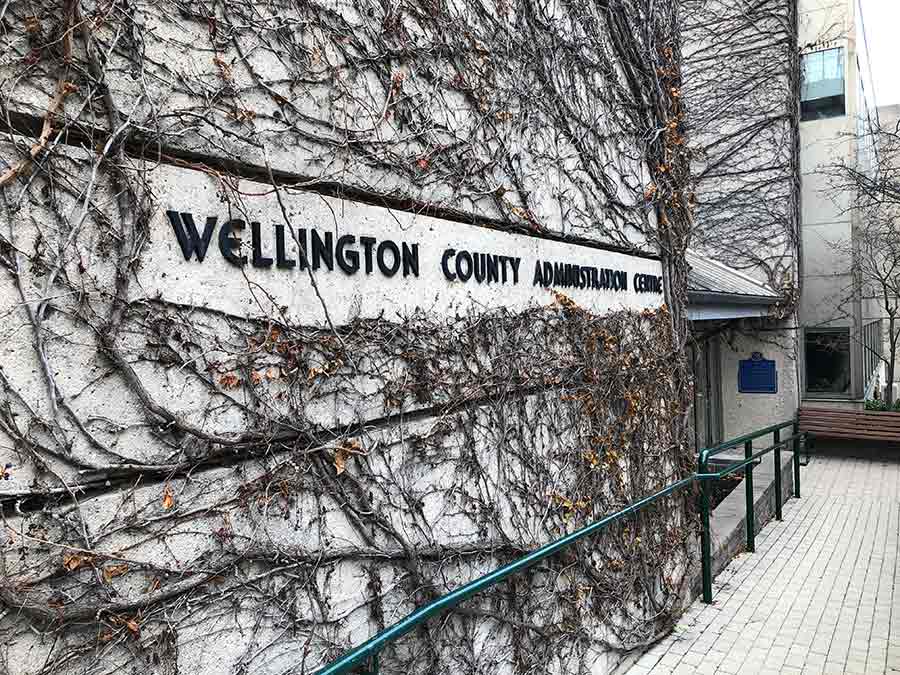WELLINGTON COUNTY – County councillors got a look at the proposed budget for 2022 during a special council meeting on Jan. 10.
The budget has previously been reviewed by county committees and departments with a preliminary version presented to councillors in November.
The budget presented to councillors on Monday contained a projected tax increase of two per cent this year with future increases ranging from 2.9% to 3.7% over the next decade.
A previous budget iteration in November had forecasted increases in the 3.1% to 3.8% range.
A doubling of Ontario Community Infrastructure Fund (OCIF) dollars is the biggest influencer of changes in the budget since previous presentations.
“The amount of money that changed was about $19 million added since November,” county treasurer Ken DeHart explained, noting the OCIF dollars all went to roads, with $7 million used to pay down debt on two bridge projects on Wellington Road 109.
With that recent influx, the total of $37.5 million from the province now surpasses the $32 million provided to the county through the federal government’s gas tax rebate, known as the Canada Community Building Fund.
In November, county staff also projected a 2021 reserve surplus in the range of $1.8 to $2.5 million.
“Since that time … I would say our situation has improved,” DeHart said, specifically pointing to favourable assessment growth.
“I would expect [the] surplus is probably going to be $3 million and up,” he said.
The estimated operating budget in 2022 is $247.3 million, with the heaviest demands coming from social services, roads, long-term care and policing.
However, the most significant departmental demand on tax dollars for operations are roads, policing and administration.
Spending on capital is “far and away” the most significant area of investment in this year’s budget, DeHart remarked.
“Our operating funding of roads capital has increased by $2.1 million in the current year … that’s to address our infrastructure deficit requirements that have been identified in the county’s asset management plan.”
Capital expenditures for this year ring in at $56.5 million (of the $511.2 anticipated over the next decade).
In 2022, the county has notably allotted capital spending on:
- property and design for a new county library branch in Erin;
- second phase development of the Riverstown landfill site;
- a new air conditioning system to be installed at Ferguson Place (a county housing location) in Fergus;
- county museum building maintenance;
- road rehabilitation of Charles Allen Way; and
- contributions to broadband infrastructure funding.
Reserve funds – used to avoid tax rate spikes and to help cover everything from operations to capital to insurance – are “healthy,” according to DeHart but lag when compared to other municipalities.
“Our reserve and reserve funds as a percentage of our tax levy are projected to decline and hover around 80% of the tax levy in the forecast,” DeHart said.
“In 2022 this budget shows us reducing our reserve balances by over three and a half million dollars.”
Capital reserves, the treasurer pointed out, are “well underfunded” at $56 million and cannot possibly respond to a $345 million amortisation calculated in 2020.
“We’ve only got 16% of our amortisation set aside,” he said.
DeHart admitted actually funding the $345-million figure is a “perfect world scenario” but said it provides “a measure of magnitude of what we do have set aside in our capital reserves, versus how much we’ve used up over the years.”
Multiple councillors responded with concern to the draw on reserves and councillors James Seely and Steve O’Neil said they wanted to see surplus dollars used to pay down debt.
The county plans to borrow $65 million over the next decade, with $7.3 million to be borrowed in 2022 for garage construction in Arthur.
At the end of 2021, the county had around $30 million of outstanding debt with taxpayers being on the hook for just over $20 million and the remainder covered by development charges on new growth.
“It’s quite affordable, even though that number looks high, you are going to see fluctuations in debt as you progress through your 10-year plan and which projects require that debt financed,” DeHart said.
He added less than 5% of the tax levy is being used to pay interest on debt.
This year councillors are looking at approving the 2% increase proposed. Last year the increase approved was 1.2%.
DeHart said a 2% increase is “pretty reasonable” compared to inflation.
“The most recent [Consumer Price Index] released for Ontario in December based on November, year-over-year change, was 5%. So we are less than half the amount of inflation for our projected tax impact,” DeHart said.
Councillors described the proposed increase as “fair,” “required,” “responsible,” “on-the-mark” and “balanced.”
The budget has not yet been passed and a complete package will be circulated to council this week.
The county’s administration, finance and human resources committee will review the budget on Jan. 18 with committee recommendations to be considered by county council on Jan. 27 when the budget is scheduled to be approved.




